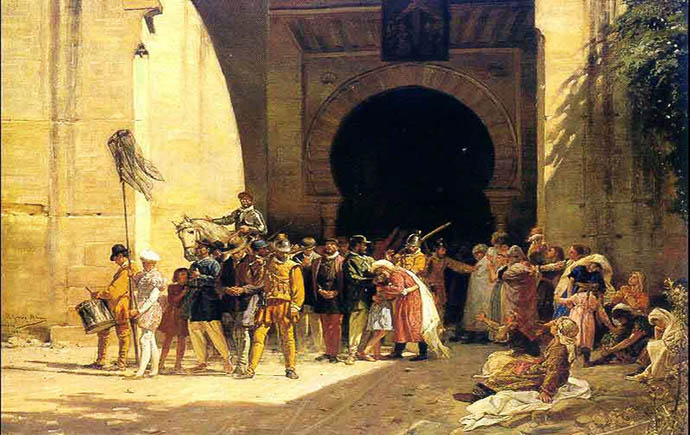
Within centuries Christians and Moors had to learn to live in Spain side by side, despite the wars between the Christian and Muslim states lasting too for centuries. Even after end rekonkist in 1492 the state and church originally showed the known share of tolerance to the Mauritian population though they began to be engaged in its address to Christianity soon enough. Situation changed after Spain was involved in the conflict with Islam, more precisely, with the Ottoman empire and its satellites. It is necessary to add that it occurred how in the first quarter of the XVI century the main part of Moors hosted a baptism. Their began to call “morisks”. Many of them remained committed to belief of ancestors. Along with Christian names which were given to children at a baptism they were secretly allocated with the Arab names. The part of the Moors who remained faithful to Islam in 1526 lifted the revolt in Espadan’s mountains suppressed with great difficulty by means of the German mercenaries. Charles V’s government was forced to be limited to rather soft terms of the contract: in case of adoption of Christianity it was authorized to insurgents to keep the customs, for 40 years jurisdiction of sacred tribunal should not have extended to them. For some time after that, the authorities first of all were anxious with that “new ‘Christians” regularly paid taxes. However in process of retraction of Spain in both of the main, the conflict on the international scene situation changed. Christian landowners were happy that their holders-moriski increased the income — also opportunities to raise from them higher rent thereby increased. On the contrary, the government and church with alarm monitored increase of property and number of “new Christians” (morisk had a big increase in population, than at the Spanish population). Gradually social bottoms accustomed to look on morisk as at the competitors who are taking away the earth from tenants from among old Christians, customers — at handicraftsmen, buyers — at small traders. Special suspicions in inquisition were caused that many morisk had the weapon which they did not want to hand over to the authorities. By the way, nearly not plans of new revolt, but aspiration of aragonsky magnates to keep the armed groups of the vassals among which there were many morisk were the main cause of it. Moriskam attributed all defects. In “Instructive short stories” of Cervantes this popular belief is so reflected: “Would be miracle to find among them one Moor who is sincerely trusting in our Christian law: all their care consists in saving up money and to protect saved up. For this purpose they work, refusing to themselves even food: when to them the real, and features not idle time falls into hands, they sentence it to lifelong imprisonment; thus, all the time acquiring and spending nothing, they raise and store at themselves huge money from those that address in Spain. They — its moneybox, her moth, her sorok and polecats: all of them collect, all hide and all absorb. It is worth to remember that there is a lot of them and that every single day they gradually acquire and postpone (and slow fever undermines life with the same force, as well as transient); as, however, Moors breed all the time, all the time increases also number of concealers, and experience shows that they are multiplied and will be multiplied endlessly”. Were considered Moriski by both a crown, and clergy as a potential agency of the terrible enemy within the country. Actually the situation was not absolutely so or maybe absolutely not so. Morisks could be become quite loyal part of the different races population of Spain if suspiciousness, petty cavils and more and more amplifying prosecutions did not push them to resistance and to searches of the help from the outside. Possibly, the similar result would be yielded by similar persecutions against any category of the population. It is only necessary to be surprised to as far as nevertheless weak were contacts of the morisk which were exposed to cruel prosecution with external enemies of the Spanish monarchy. It was told above about what character was gained by Suprema’s activity from the middle of the 16th century. “Golden Age” of Spain became “Golden Age” of persecutions. More and more deep involvement of Spain in the international conflicts happening in the form of religious, ideological collisions left an additional mark on the relation of the authorities to a problem of morisk. Whether it was possible to consider safe position of the state when in a number of its areas — moreover coastal — the population consisted almost entirely of morisk, and in many settlements as old Christians there were only a priest, the notary moreover sometimes the rural innkeeper? The aspiration of morisk to keep together with those who like them kept language a suit and customs of ancestors, naturally, only amplified from prosecutions. Repressions did not help, and harmed assimilation process, and it, in turn, strengthened suspicions and fears of the authorities. Morisks began to attribute communications not only with the Algerian corsairs — that was unsurprising when those strengthened the raids against the Mediterranean coast of Spain — but also with the French Huguenots (through Catalonia) that was not any more in a harmony with any logic, except that, as Muslims, and Protestants were enemies of “its Catholic majesty” of the king of Spain. However, the policy of repressions led to the fact that the most ridiculous suspicions began to be realized into reality. If it was talked of communications with Huguenots, morisk supported with them traffic in arms and other military equipment. Concerning the Algerian corsairs business was more difficult. In 50th and 60th corsairs landed in the Spanish territory more than once, sometimes moving ahead on 10 — 12 kilometers deep into. By their ships quite often there went many morisk. In 1565 Turks besieged the island of Malta. All attempts of Spaniards to put counterstrokes (for example, expedition against Tripoli) terminated in failure. And here still inquisition produced “evidence” of communication of morisk with corsairs of Algeria and Tetuan, with leaders of the Moroccan tribes, moreover, even the fact of transfer to Constantinople of news that “new Christians” are ready to take a number of seaports was given and to transfer them to hands of the Turkish fleet. It was reported also that the morisk which were earlier fleeing Spain were sent as spies to Malta to collect data on the Spanish squadron which was there. However, all similar confessions were made under tortures in inquisition casemates, but it did not confuse Philip II’s government at all. In 1526 it was published Pragmatical эдикт, putting under a ban Muslim clothes, names, songs, dances and even Mauritian baths which turned into some kind of political clubs. Long time is the legislation remained mostly only on paper, but on January 1, 1567 — in 75-year anniversary of a gain of Grenada, the last support of Moors on the Iberian Peninsula — was declared that Pragmatical эдикт it will be put into operation within two years. Oppressions became intolerable. In despair of a moriska resorted to the only thing to the means which remained with them — open revolt. Begun at the end of 1567, it captured extensive mountainous areas between Sierra-Nevada and the coast. Moriski was considered that 60 thousand perfect soldiers of the Spanish army were in the Netherlands, and also hoped for the help of the Turkish sultan promised them. Risen won a number of victories. The papal Nuncio at court of Philip II reported in the confidential dispatch of October 26, 1569 that if mutiny lasts one more winter, the Spanish state can suffer accident. Philip II’s inability a long time, despite mobilization of large military forces, began to suppress revolt at once a factor of the all-European value. William of Orange wrote: “An example for us is that Moors were capable to show resistance so long … Let’s look what will occur if morisk hold on before Turks are able to give them help”. In 1569 Algerian beat, the vassal Ports, sent to insurgents the weapon and military equipment, carried out raids on the coast of Spain, and in January, 1570 Tunisia occupied the Spanish protectorate. The sultan himself promised to come to the rescue of moriska in fight against “tyrannical and damned incorrect”, but was late. For defeat of the insurgent army totaling up to 45 thousand armed soldiers, the Spanish authorities needed two years. After revolt suppression, in November, 1570, 150 thousand morisk were expelled from Grenada in other parts of Spain. Not less than the fifth part of them died on the road for hunger and deprivations. The province was devastated as after enemy invasion, and the problem of the morisk settled now across all territory of the kingdom was turned from local into the all-Spanish. Having bethought, the authorities forbade moriska to lodge in coastal areas of Andalusia (since 1579) and Valencia (since 1586) . The Oxford historian Ch. Petri wrote: “It is doubtful that the XX century would manage from moriska better … In any case, Philip II at last received freedom of hands in an antagonism with Turks, without being afraid of a knife in a back”. It only reproduction of the point of view of the Spanish authorities. “We have to consider all morisk as sworn enemies”, – — we read in official correspondence of 1588. After defeat the same year of the Invincible armada sent against England, began to attribute to moriska communications with the British heretics, were afraid of revolt of “new Christians” in case of possible raids of the English fleet. It should be added that the number of morisk did not exceed 80 thousand people, that is made less than one percent of the 9-million population of Spain. The public atmosphere created by the century conflict generated also the bloody “witch-hunt” developed in Western Europe and which demanded the numerous victims. Not incidentally chronological milestones of these prosecutions precisely coincide with a framework of the century conflict (approximately 1520 — 1650), and areas which were the main zero fight between the conflicting camps became the centers of persecutions.
Chernyak E. B. Century conflicts

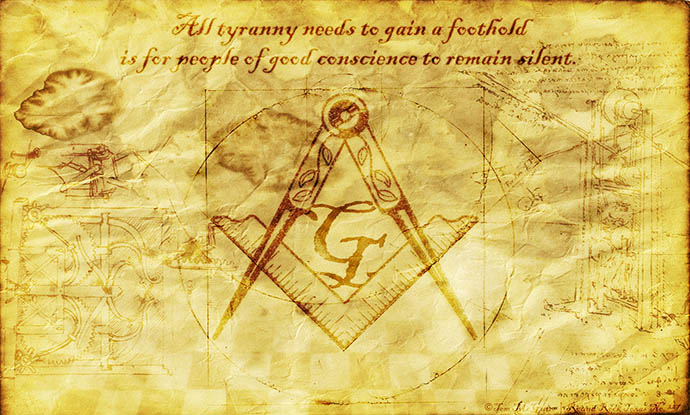
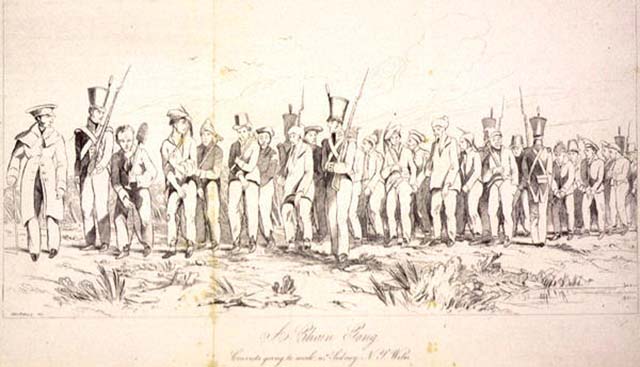
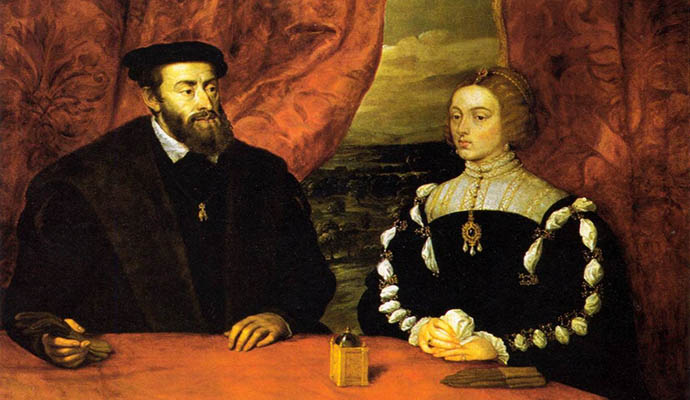

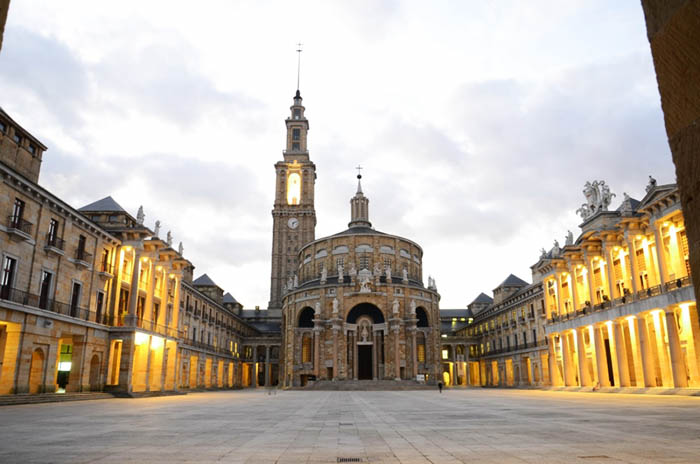
Leave a Reply